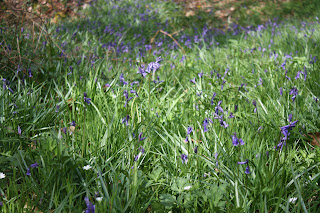A simple example, the below picture is of a "modern" monoculture approach to farming, where big is best, wipe out all the margins and suppress (through chemical and pesticide treatments) the "integrity" of your single crop.
But where is the diversity, how is the soils condition and health maintained, where is the LIFE?
(image courtesy of http://www.permanentculturenow.com/permaculture-as-a-revolutionary-force-for-change/)
If you compare that with any rudimentary permaculture site (above)you will see that the margins are everywhere, the growth of pioneer species and what would be considered by most farmers or gardeners as weeds, can encourage beneficial insects to keep your food stuffs disease and insect free; which encourages a more divers range of birds to feed on the insects berries and what not depositing them further afield; as more plants grow from self-seeding, more insects lead to more birds and more mammals and even larger predators and your small holding can produce SO much more then the ocean of green above!So let the wild ones in! These are all the little ones we find in the margins around La Fieffe:
1.
2.
3.
4.
5.
6.
7.
8.
9.
10.
11.
12.
13.
14.
15.
16.
17.
18.
19.
20.
Some of these are duplicates, have some fun identifying them, if you like (or can). I'd like to share what I think they are, but one of the blog followers is a horticulturist and a pedant to boot, so I dare not claim to know absolute truth, you know who you are ;~)






















Other species adapted to a particular range of flowers that
ReplyDeletewere in season just when they chose to become active, while some became carnivorous,
and so, within the Hymenoptera order, the bees, ants and wasps diverged and adapted, each to their
own ecological niche. You need to explore the possibilities of what
can you do depending on your abilities and resources available.
Healthy soil means healthy plants, which allows us to grow organic
food.
Here is my homepage permaculture design